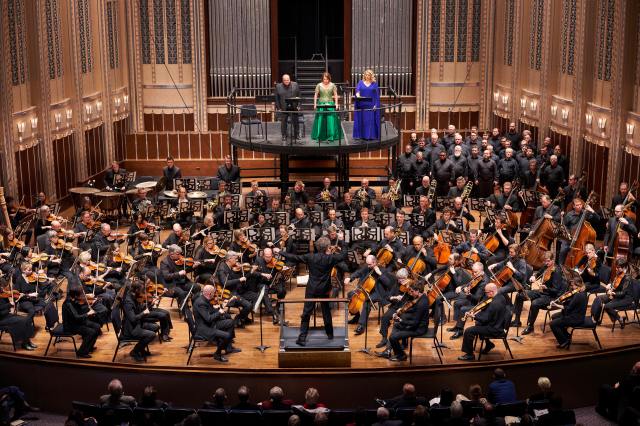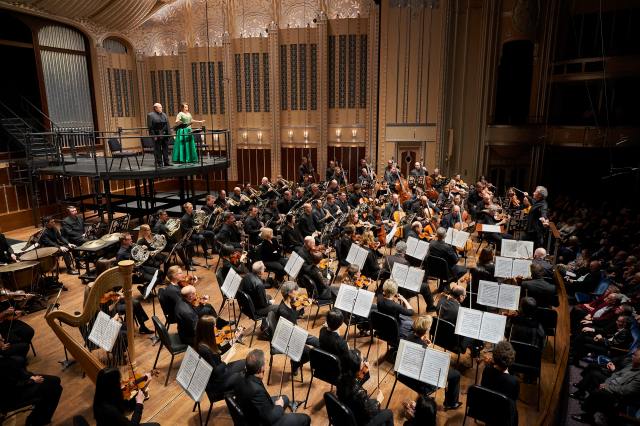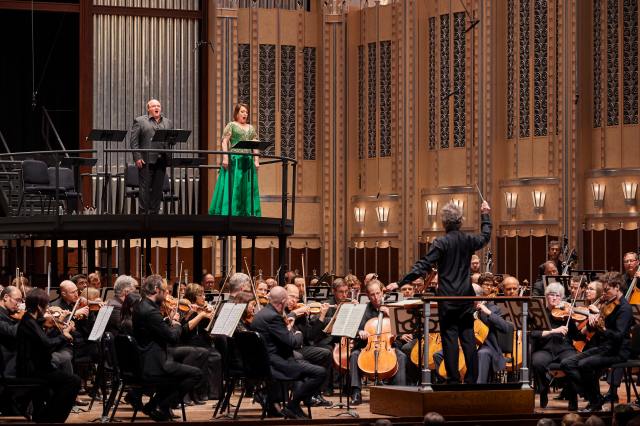Cleveland Orchestra
Franz Welser-Möst, conductor
Severance Hall
Cleveland, OH
April 21, 2018
Wagner: Tristan und Isolde
Gerhard Siegel, tenor (Tristan)
Nina Stemme, soprano (Isolde)
Okka von der Damerau, mezzo-soprano (Brangäne)
Ain Anger, bass (King Marke)
Alan Held, bass-baritone (Kurwenal)
Sean Michael Plumb, baritone (Melot)
Matthew Plenk, tenor (Young Sailor/Shepherd)
Francisco X. Prado, baritone (Steersman)
Men of the Cleveland Orchestra Chorus
Lisa Wong, acting director
If there is one thing for which Franz Welser-Möst’s tenure in Cleveland is to be remembered, surely it should be his steadfast commitment to opera – hardly surprising for someone who has held music directorships at the major opera houses of Vienna and Zurich. This reached an apex Saturday night with the first of three performances of Wagner’s monumental and incomparable masterpiece Tristan und Isolde. Inclusive of two intermissions, total performance time fell just short of the five hour mark, yet the intensity never waned (although, regrettably, the number of empty seats noticeably increased following each intermission). A platform for the singers above the orchestra was erected at the back of the stage allowing the focal point to shift between the excellent cast and the orchestra. The opera was presented strictly in concert, sans staging, allowing one to be enraptured by the sheer beauty and power of the music undiluted.

The justly famous prelude hovered on the edge of audibility, barely a few seconds in before the first statement of the dissonant Tristan chord that would remain unresolved until the very end. Welser-Möst’s fluid conducting gave the arching melodic lines an inexorable if unfulfilled sense of yearning. In spite of the star-studded cast of singers, one was reminded time and again that the orchestra was perhaps the evening’s biggest standout, sounding like the most seasoned of operatic ensembles. Tenor Matthew Plenk had the first vocal appearance in the role of the Young Sailor, singing unaccompanied from offstage – as effective here as he was in his other minor role of the Shepherd. The extraordinary Swedish soprano Nina Stemme served as Isolde, and much of the first act was centered on her dialogue with her maidservant Brangäne, given by Okka von der Damerau, whose darker-hued mezzo served as an ideal complement to Stemme.
Bass-baritone Alan Held was an imposing Kurwenal, providing a voice of reason amidst the surrounding passion. Gerhard Siegel was a fine if uneven Tristan, his first exchange with Isolde quickly shifting from confrontation to love song. The first act closed with courtly and glorious brass hailing the return of King Marke, to whom Isolde was to wed – an unsettling display of victory given the inevitability of tragedy. Also of note on the instrumentalist front were the solo passages of principal viola Wesley Collins, along with the plangent clarinet and sinuous English horn, the latter of which has unusual prominence in this work.

The magical second act was centered on the two lovers, opening with a passionate prelude, with now distant horn calls signaling Marke’s departure for the evening. Stemme all but conquered the superhuman demands of her role, slicing through the even the densest orchestral passages, the immediacy and power this preeminent Isolde of our time extraordinary to witness. Siegel, though still arresting and convincing, wasn’t quite an even match as his delivery seemed to fall short of that of a true Heldentenor. Isolde lamented being a slave of the day, introducing the opera’s central duality of light versus dark – it is in the darkness of night where passions can run free and the pair celebrated in triumphant bliss, freed from the boundaries of daylight. A particularly affecting duet took a melody first developed in Wagner’s earlier song Träume from the Wesendonck Lieder. Mathilde Wesendonck, the song cycle’s namesake, was a married woman with whom Wagner was romantically entangled, that is to say, the plot of Tristan had analogs in the composer’s own biography (and parenthetically, local audiences had the recent chance to hear the lieder during a City Music concert this past December).
Damerau’s Brangäne warned of Marke’s impending return, a nearly surreal moment coming from offstage as the couple reached a state of transcendence together. Tristan introduced the passionate rapture motif, and a steadfast pull towards resolution of dissonance was abruptly halted by the appearance of the king, as true resolution could only happen in death. The Estonian bass Ain Anger supplied the role of Marke with sonorous and stentorian resound, aided by some fine playing in the bass clarinet. The somber prelude to the final act was a remarkable expression of pain (it too having roots in the Wesendonck Lieder). A shepherd was accompanied by a lone English horn, which Welser-Möst opted not to conduct, instead allowing the soloist rhapsodic, free-form delivery. Siegel had his finest moments here in Act III, with Tristan giving an impassioned monologue even while mortally wounded. The cellos yearned as Tristan and Isolde were briefly reunited, and Stemme’s closing Mild und leise was utterly rapturous, with the long-anticipated resolution finally arriving, and gloriously so. The shimmering, lustrous final chord left the audience in an almost trance-like state, and closed a performance that will persist in memory for years to come.

